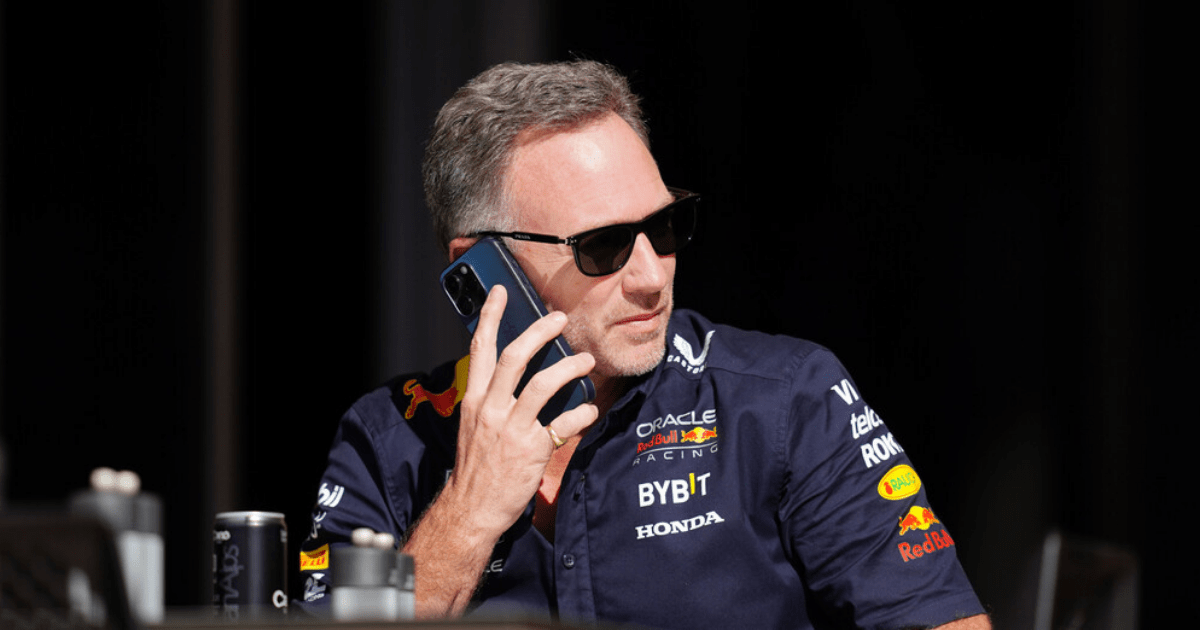Explosive Revelation
An insider close to the Red Bull Racing camp allegedly detonated the Christian Horner sexting scandal in an attempt to oust the F1 team boss, SE can exclusively reveal.
Allegations and Investigation
Red Bull is currently investigating claims that a mysterious figure linked to the team orchestrated the WhatsApp leak and played the role of a "puppet master."
Timing and Fallout
The shocking release came just a day after team principal Horner was cleared of sending inappropriate texts to a female employee. The scandal has caused a stir within the team, with rumors swirling about a mole with a vendetta against Christian.
Team Support
An F1 insider shared with SE, "It seems to have been calculated to cause maximum damage to Christian’s career, humiliating him just 24 hours before the F1 season begins. The team stands firmly behind Christian and everyone is working towards a common goal."
Current Status
Despite the scandal, qualifying for today's Grand Prix proceeded as scheduled at the Bahrain circuit, as the team navigates this unexpected turn of events.
Frequently Asked Questions
What measures are Formula 1 taking to become more sustainable?
Formula 1 has taken several steps to become more sustainable. One of the major initiatives is the transition to biofuels. The goal is to achieve a carbon footprint net zero by 2030. The sport is investigating advanced sustainable fuel technology to reduce greenhouse gas emission. They are also implementing measures to improve the environment in terms of travel, carbon offsetting, and other aspects. F1 also works with partners to reduce waste and improve recyclability.
How do aerodynamics play a role in Formula 1 racing?
In Formula 1, aerodynamics play a crucial role in the performance and handling. The cars are designed to generate downforce through wings and bodywork, which presses them onto the track, improving grip and allowing for higher cornering speeds. Drag reduction is also important for maximising straight-line speed. Aerodynamic efficiency requires balancing drag and downforce, which leads to complex designs.
How can F1 cockpits improve driver comfort and safety?
F1 cockpits were designed with driver safety and comfort as the primary focus. Safety is further enhanced by the use a carbon-fiber composites survival cell, padding, and halo devices. Seats are custom-molded to each driver’s body, ensuring a secure and comfortable fit. The cockpit is designed with a minimum amount of space to facilitate driver extraction.
What is the function of the Power Unit on a Formula 1 vehicle?
The Power Unit in a Formula 1 car is a combination of an internal combustion engine and electrical systems, including the Energy Recovery System (ERS). It is the main source of propulsion. While the internal combustion engines provide the base power, the ERS adds additional performance. Integrating these components is crucial for achieving maximum power, efficiency, as well as compliance with regulatory restrictions.
What are the most common materials used to construct a Formula 1 chassis?
The chassis of a Formula 1 car is primarily constructed from carbon fiber composites. This material has a high strength-toweight-ratio, which offers excellent rigidity at a low weight. Materials such as titanium and aluminum may also be used in specific components. Advanced polymers and honeycomb structure are used to improve structural efficiency and crash absorption.
What are the brake systems used on Formula 1 cars?
The braking systems in Formula 1 cars are highly advanced, consisting of carbon fiber brake discs and pads, coupled with sophisticated hydraulic systems for optimal stopping power. These components can withstand extremely high temperatures and provide responsive braking. Brake-bywire systems in the rear provide fine-tuned electronic controls of brake force distribution. They help stabilize the car when decelerating and assist with the regeneration of energy.
What advances have been made with tire technology in Formula 1?
Formula 1 tire technology has evolved significantly, with advancements focusing on compounds, construction, and performance. Tire compounds can be developed to fit different track temperatures, conditions and strategies. Tires have been improved in construction to increase strength, durability and lateral grip. The tread patterns and the contact surfaces have also been improved to improve performance throughout the race distance.
Statistics
- Formula 1 engines can rev up to 15,000 RPM, a decrease from the 18,000 RPM limit set prior to the 2014 regulation changes.
- The minimum weight for a Formula 1 car, including the driver but excluding fuel, is set at 752 kg for the 2023 season.
- Formula 1 tires lose weight during a race due to wear and degradation, with up to 0.5 kg shed from each tire.
- Wind tunnel testing for Formula 1 cars is limited by regulations, with teams only allowed a maximum of 40 hours of running per eight-day aerodynamic testing period.
- A typical Formula 1 car’s brake discs can reach temperatures of over 1,000 degrees Celsius during heavy braking.
- Modern Formula 1 car chassis are required to withstand a frontal crash test with a peak deceleration of no more than 25 g.
- In 2021, Formula 1 announced its plan to have a net-zero carbon footprint by 2030, which includes the cars, on-track activities, and the rest of the operations.
- Formula 1 races on average have over 300 sensors on a car, generating more than 1.5 billion data points over a race weekend.
External Links
autosport.com
f1chronicle.com
renaultsport.com
wired.co.uk
motorsport.com
bbc.com
engadget.com
racecar-engineering.com
How To
How to Analyze Formula 1 Telemetry?
Analyzing Formula 1 telemetry data requires a methodical approach. Teams collect information about tire usage, engine efficiency, speed and more. Before you begin, understand the data streams that reveal information about your car’s performance. Study the software used by engineers for interpreting telemetry, and use this information to understand how changes in the setup of the car affect lap time. Learn how data-driven strategies can be shaped by understanding the impact of race-driven decisions.

